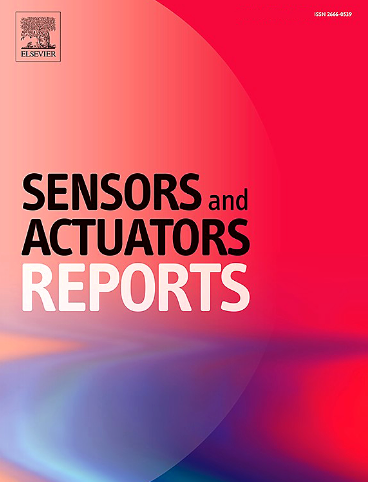Moisture-thermo dual-responsive hydrogel structure for liquid composition change detection and programmed actuation via vertical crosslinking gradient based defocusing photolithography
IF 7.6
Q1 BIOTECHNOLOGY & APPLIED MICROBIOLOGY
引用次数: 0
Abstract
Multifarious detection and response mechanisms have been introduced and implemented because responsive materials, particularly hydrogel polymers, adopt certain transformations by external reactions and recover their original appearance. Heterogeneous structures are usually fabricated to obtain responsive hydrogels. In addition, component frame gradation methods have been applied to overcome the limitations of material composition. In this study, we present versatile responsive hydrogel structures that perform as sensor or actuator. The structures are fabricated using a defocusing maskless photolithography system with an objective lens, and consist of a single hydrogel-retained polymeric crosslinking density gradient. The hydrogel structures immersed in anhydrous hygroscopic solutions fail to swell, thereby maintaining their curved shapes. The solutions, improperly stored and left unattended, naturally absorb ambient moisture, and the resulting increase in water content enhances water–polymer interactions proportionally. This enhanced interaction induces swelling of the hydrogel, leading to curvature changes, enabling the structure to function as a sensor for detecting changes in liquid composition. By utilizing the structure, a change in moisture content of approximately 3% is easily verified without mechanical assistance. In contrast, temperature-dependent property changes in ethanol solutions with minimal water content predominantly affect solution–polymer interactions rather than polymer–polymer interactions. Reversible structural responses of the hydrogel are analyzed under repeated thermal cycling, and actuators such as a gripper and walking robot operating via thermal switching are successfully developed.

基于垂直交联梯度离焦光刻的液体成分变化检测和程序驱动的湿热双响应水凝胶结构
由于反应性材料,特别是水凝胶聚合物,通过外部反应发生一定的转变,并恢复其原始外观,各种检测和响应机制已经被引入和实施。通常制备非均相结构以获得反应性水凝胶。此外,还应用了组件框架分级方法来克服材料组成的局限性。在这项研究中,我们提出了多功能响应水凝胶结构,作为传感器或执行器。该结构是使用带有物镜的散焦无掩膜光刻系统制造的,并且由单个水凝胶保留的聚合物交联密度梯度组成。浸入无水吸湿溶液中的水凝胶结构不会膨胀,从而保持其弯曲形状。这些溶液如果储存不当或无人看管,就会自然地吸收周围的水分,从而导致水含量的增加,成比例地增强了水-聚合物的相互作用。这种增强的相互作用诱导水凝胶膨胀,导致曲率变化,使该结构能够作为检测液体成分变化的传感器。通过利用这种结构,在没有机械辅助的情况下,可以很容易地验证大约3%的水分含量变化。相反,在最小含水量的乙醇溶液中,温度依赖的性质变化主要影响溶液-聚合物相互作用,而不是聚合物-聚合物相互作用。分析了水凝胶在反复热循环下的可逆结构响应,并成功研制出了热开关驱动的抓手和步行机器人等作动器。
本文章由计算机程序翻译,如有差异,请以英文原文为准。
求助全文
约1分钟内获得全文
求助全文
来源期刊

Sensors and Actuators Reports
Multiple-
CiteScore
9.60
自引率
0.00%
发文量
60
审稿时长
49 days
期刊介绍:
Sensors and Actuators Reports is a peer-reviewed open access journal launched out from the Sensors and Actuators journal family. Sensors and Actuators Reports is dedicated to publishing new and original works in the field of all type of sensors and actuators, including bio-, chemical-, physical-, and nano- sensors and actuators, which demonstrates significant progress beyond the current state of the art. The journal regularly publishes original research papers, reviews, and short communications.
For research papers and short communications, the journal aims to publish the new and original work supported by experimental results and as such purely theoretical works are not accepted.
 求助内容:
求助内容: 应助结果提醒方式:
应助结果提醒方式:


